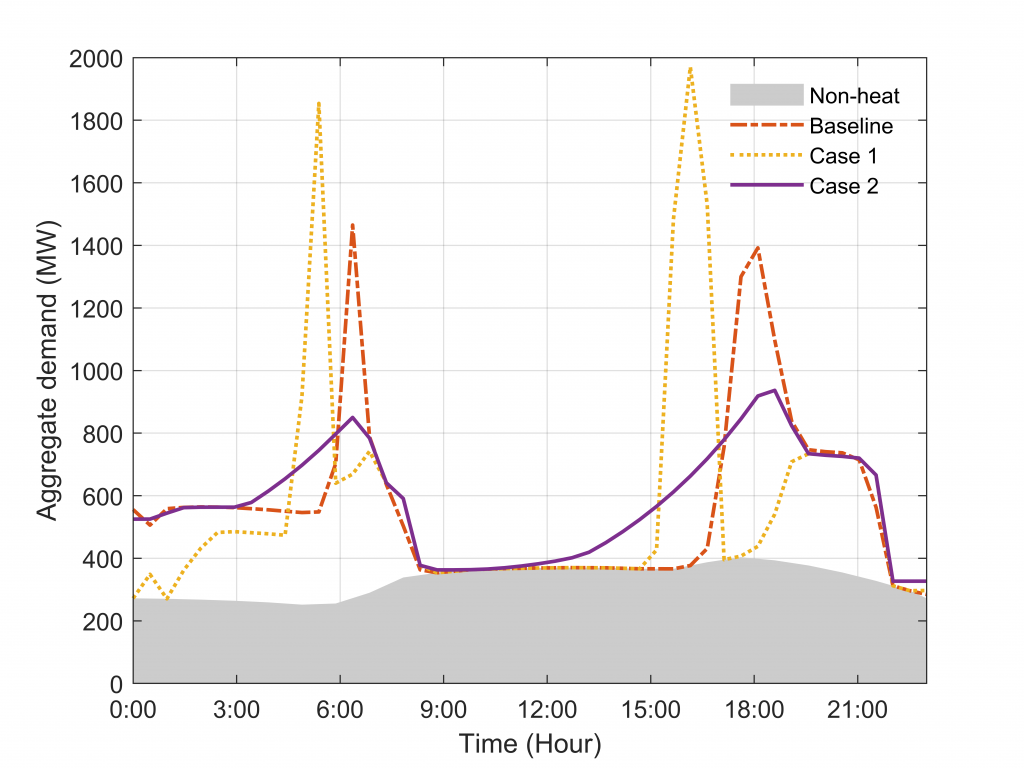How can we effectively decarbonise the way in which we heat buildings without spending a fortune on upgrading the power grid? As part of the Active Building Centre Research Programme, the team at Imperial College London are devising new and innovative approaches to overcome this challenge.
The heating challenge
When you consider the total energy used by a building, the energy required to heat it takes up the lion’s share. This heat demand is seasonal and highly variable, with huge differences between peaks and troughs. If our heating demand is decarbonised through electrification, the increased electricity peak demand driven by heat will put great strain on our power system. We need to alleviate this problem with new, innovative solutions. If not, we will need to increase our electricity system capacity at scale – a costly burden that will be borne by us, the consumers.
Preheating and peak shaving
Preheating by developing intrinsic thermal storage within a building can potentially play an important role in peak shaving and increased flexibility for the power system.
Preheating enables us to shift the electricity demand away from peak periods, which normally occur between 6 pm and 7 pm. By preheating a room or building, the heat-led electricity demand during peak periods can be reduced without compromising comfort levels for the occupants. However, to be cost-efficient, an active building should be sufficiently insulated to retain the heat without significant losses. Otherwise, thermal losses will make this scheme inefficient and costly.
We can use the flexibility that this approach provides as a ‘heat battery’ or, more formally, thermal energy storage (TES). TES can be used to smooth peaks and troughs in demand. Collectively, active buildings will offer a huge TES resource.
Profiting from preheating at scale
For an individual consumer to benefit from preheating, a real-time pricing scheme would be needed. The cost of generating and distributing electricity varies throughout the day. Generally, it is much higher at times of high demand and the real-time price would reflect this. The consumer can take advantage of this varying ‘price signal’ by energy arbitrage, using electricity to preheat when the price is low. However, collective preheating by many consumers, would cause a strong distortion in the price signal. This increased demand could increase the price and therefore diminish the cost benefits of preheating.
A coordinated heating effort
Without coordination, most households will not be able to implement effective preheating due to information asymmetry. This, in turn would simply undermine any potential benefits of preheating for the consumer and the wider power system.
To mitigate this, we are developing a strategy to coordinate smart preheating across a large population of active buildings. We will use an optimal collective heating schedule which meets the needs of all participating active buildings, while minimising total energy cost, to enable an effective real-time pricing scheme.
The figure below demonstrates that coordinated preheating (Case 2) can effectively smooth the aggregate demand of the baseline case (no preheating) and how uncoordinated preheating (Case 1) fails in achieving peak shaving and even creates a larger peak.

So here is the key finding: without coordination, consumers would respond to short term changes in electricity price at the same time, causing new peaks. Our proposed distributed control approach enables coordinated and efficient use of large-scale heat energy storage in a large cohort of active buildings.
Dr Xi Zhang of Imperial College London is investigating the whole-system benefits of active buildings for the Active Building Centre Research Programme, with a particular focus on modelling flexible heat demand in large populations of residential buildings.


